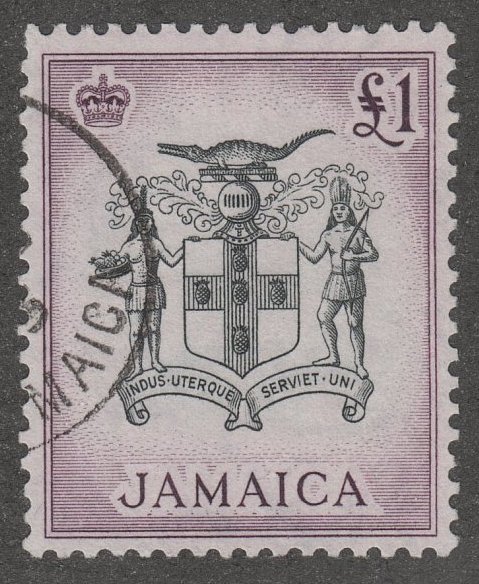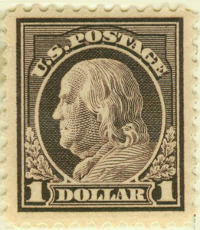
Discussion - Member to Member Sales - Research Center

Discussion - Member to Member Sales - Research Center

Has the crown of Hungary, except for the bent cross at top. Other than that I have no idea.

Any help appreciated.
Mel

Login to Like
this post
Hungry?? Don't you mean Hungary?

Login to Like
this post
Well it is close to lunch time
Reason #23 I do not collect WW. I cannot spell.
Fixed it.

2 Members
like this post.
Login to Like.
It is Bulgaria Scott# 161 from 1921
-Les

2 Members
like this post.
Login to Like.
Would never have found it.
Thanks for the help. Probably the only European country I did not look under.
Love this place, everybody knows something that helps others.
Mel

1 Member
likes this post.
Login to Like.
Perhaps an idea if you again come across a stamp with foreign script types:
If it's not Latin type, but you still recognize a few letters, it may be Greek or Cyrillic. Greek type is usually pretty clear, and is practically only used in Greece and Cyprus. Cyrillic, in particular in older versions or when it is used for representative purposes, ´ often looks more elaborate. There are several countries using the Cyrillic script, chiefly among them Russia and Bulgaria as well as several of the former Soviet and Yugoslav republics. If it's not Russia, Bulgaria is often a good second guess.
Also, the currencies often help. Rubles (P) and Kopecks (kon) for Russia, Lewa (LV) and Stotinki (ST, CT) for Bulgaria, Para and Dinar for ex-Yugoslavia ...
Hungary always used Latin type.
-jmh

Login to Like
this post
Martin,
Thank you very much for the information. Another addition to my reference file. I have the Linn's Stamp Identifier which is a great help. It shows all the Greek and Cyrillic alphabet and a lot of other words used on stamps all in alphabetic order. I could not find any of the words on the stamp pictured, but with your information regarding the currencies (CT) that would have pointed me to Bulgaria.
Mel

Login to Like
this post
Well, the letters on this and other older Bulgarian stamps evoke the old Church Slavonic, a fairly decorative style that is sometimes hard to read. A bit like the blackletter fonts (Fraktur, Old English) for the Latin alphabet. On the other hand, on newer Bulgarian stamps you find a style that is close to "printed script", with the small t looking like an m. So, if you find a stamp that seems to have a face value in centimeters (cm), it's likely to be Bulgarian stotinki, too ;-)

Login to Like
this post

I do not know why I torture myself like this, but when you have a few thousand WW stamps and nothing to do while staying inside, it has to be stamps I do not collect, but look for the treasure trove.
Has the crown of Hungary, except for the bent cross at top. Other than that I have no idea.

Any help appreciated.
Mel

Login to Like
this post
12:33:43pm
re: Another Unknown (Hungary?)
Hungry?? Don't you mean Hungary?

Login to Like
this post

re: Another Unknown (Hungary?)
Well it is close to lunch time
Reason #23 I do not collect WW. I cannot spell.
Fixed it.

2 Members
like this post.
Login to Like.
01:15:48pm
re: Another Unknown (Hungary?)
It is Bulgaria Scott# 161 from 1921
-Les

2 Members
like this post.
Login to Like.

re: Another Unknown (Hungary?)
Would never have found it.
Thanks for the help. Probably the only European country I did not look under.
Love this place, everybody knows something that helps others.
Mel

1 Member
likes this post.
Login to Like.
re: Another Unknown (Hungary?)
Perhaps an idea if you again come across a stamp with foreign script types:
If it's not Latin type, but you still recognize a few letters, it may be Greek or Cyrillic. Greek type is usually pretty clear, and is practically only used in Greece and Cyprus. Cyrillic, in particular in older versions or when it is used for representative purposes, ´ often looks more elaborate. There are several countries using the Cyrillic script, chiefly among them Russia and Bulgaria as well as several of the former Soviet and Yugoslav republics. If it's not Russia, Bulgaria is often a good second guess.
Also, the currencies often help. Rubles (P) and Kopecks (kon) for Russia, Lewa (LV) and Stotinki (ST, CT) for Bulgaria, Para and Dinar for ex-Yugoslavia ...
Hungary always used Latin type.
-jmh

Login to Like
this post

re: Another Unknown (Hungary?)
Martin,
Thank you very much for the information. Another addition to my reference file. I have the Linn's Stamp Identifier which is a great help. It shows all the Greek and Cyrillic alphabet and a lot of other words used on stamps all in alphabetic order. I could not find any of the words on the stamp pictured, but with your information regarding the currencies (CT) that would have pointed me to Bulgaria.
Mel

Login to Like
this post
re: Another Unknown (Hungary?)
Well, the letters on this and other older Bulgarian stamps evoke the old Church Slavonic, a fairly decorative style that is sometimes hard to read. A bit like the blackletter fonts (Fraktur, Old English) for the Latin alphabet. On the other hand, on newer Bulgarian stamps you find a style that is close to "printed script", with the small t looking like an m. So, if you find a stamp that seems to have a face value in centimeters (cm), it's likely to be Bulgarian stotinki, too ;-)

Login to Like
this post




